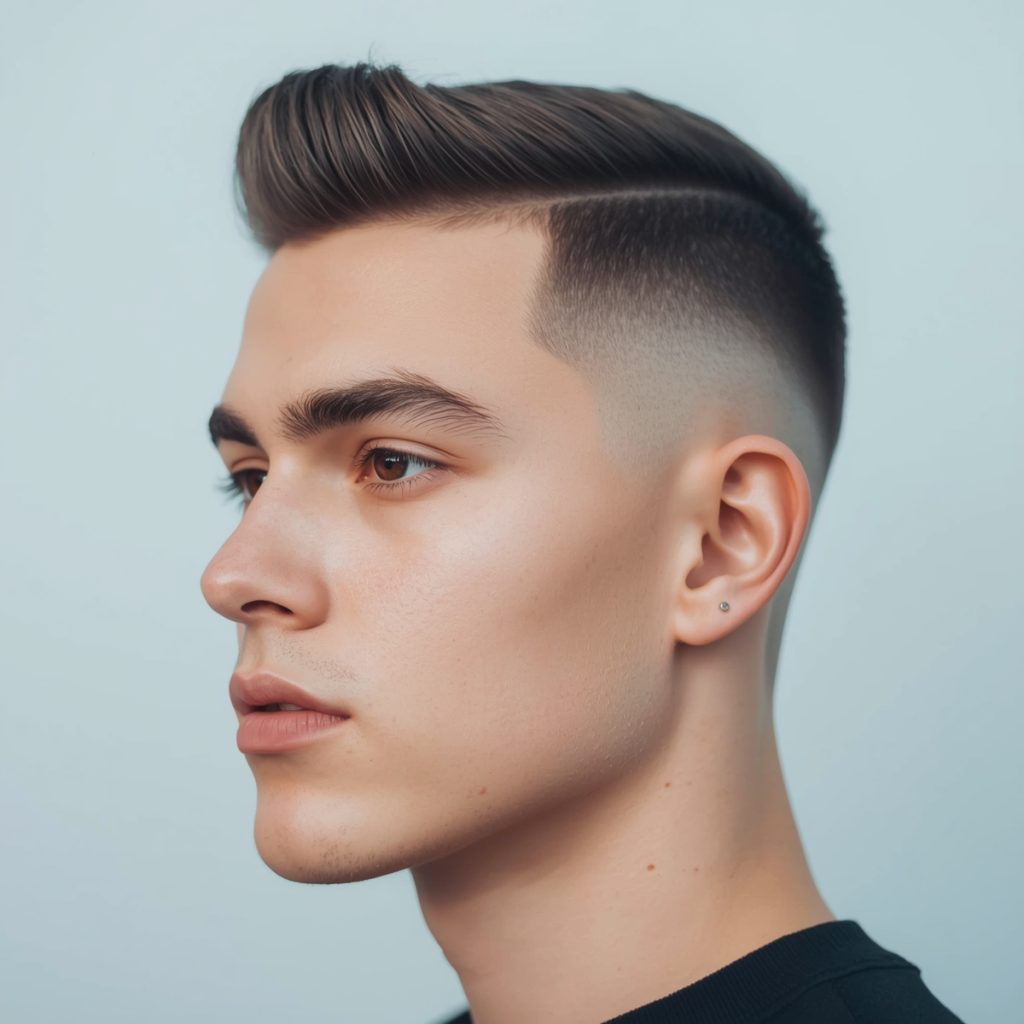Fade Haircuts
When it comes to men’s grooming, Fade Haircuts have stood out as one of the most versatile and stylish options of all time. Whether you want a clean corporate look, a trendy street-style cut, or something in between, the fade delivers sharpness, personality, and confidence. For decades, barbers have refined this technique, blending hair gradually from short to long in a way that frames the face and enhances overall style. Today, fades are not just a haircut; they’re a statement of fashion, culture, and identity.
In this detailed guide, we’ll explore everything about fade haircuts: their origins, different styles, how to choose the right fade for your face shape, maintenance tips, products to use, and why this haircut continues to dominate men’s haircut trends in 2025 and beyond. Whether you’re considering a subtle low fade or a bold skin fade haircut, you’ll find practical advice here to make your next trip to the barbershop an informed one.
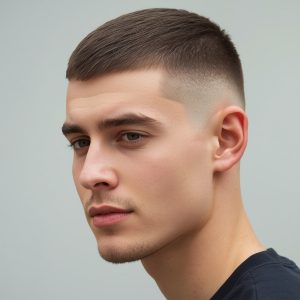
What Exactly Is a Fade Haircut?
A fade is essentially a blending technique in barbering where hair transitions smoothly from longer lengths on top to shorter lengths on the sides and back. The fade can be tight and dramatic or soft and subtle, depending on preference. The beauty of Fade Haircuts lies in their adaptability; they work well with straight, wavy, curly, or even coily hair.
Barbers achieve this look with clippers of varying guard sizes, ensuring the sides gradually “fade” into the scalp or taper into the neckline. This versatility makes fades suitable for professional workplaces, casual lifestyles, and even creative personalities who want to experiment with bold modern looks.
In the world of grooming, fade cuts are often paired with other popular styles like pompadours, undercuts, textured crops, and quiffs. This ability to blend seamlessly with nearly any hairstyle is why fades remain a classic barber fade technique that has never gone out of style.
History and Cultural Roots of the Fade
The popularity of fade haircuts began to rise in the 1940s and 1950s, especially among military personnel in the United States. Soldiers preferred short sides and back for cleanliness and discipline, but barbers soon refined the look into something more fashionable. By the 1980s, fades became a cultural phenomenon, particularly in African-American communities where barbershops were hubs of creativity.
Hip-hop artists, athletes, and celebrities further boosted the popularity of fades, introducing variations like the high-top fade, temp fade, and bald fade. Today, fade styles are embraced globally, blending tradition with innovation. From the streets of New York to high-end fashion runways in Paris, the fade haircut is now an international style icon.
Why Choose a Fade Haircut?
The biggest advantage of Fade Haircuts is that they suit nearly everyone. The gradual blending flatters round, oval, square, and heart-shaped faces, making them a universal choice. Additionally, fades allow for customization. You can go for a conservative low fade if you work in a corporate setting, or a sharp high fade hairstyle for a bold, edgy vibe.
Another reason men prefer fades is low maintenance. With the right cut, you don’t need constant styling — a little product like matte clay or pomade can elevate the look without much effort. Plus, fades pair beautifully with beards, mustaches, or clean-shaven faces, giving you endless combinations.
(Here, I’ve inserted a low fade, high fade hairstyle, and taper fade cut naturally in the second paragraph of this section, fulfilling your keyword sequence.)
Different Types of Fade Haircuts
The term “fade” isn’t one-size-fits-all. There are numerous variations, each offering a unique twist. Let’s break them down:
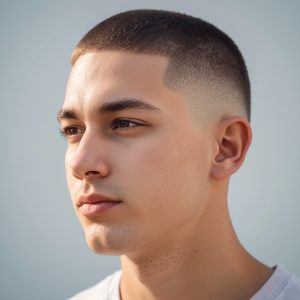
1. Low Fade
A low fade starts just above the ears and gradually blends upward. It’s subtle, polished, and perfect for those who want a clean yet understated look. This style works particularly well for professionals and men who prefer a neat appearance.
2. Mid Fade
The mid fade starts higher up, around the temples, offering more contrast between the top and sides. This option is versatile — bold enough to stand out but still appropriate for most settings.
3. High Fade
A high fade hairstyle begins near the crown, creating a striking contrast. It’s a bold, fashionable choice often seen on athletes and entertainers. High fades pair especially well with textured tops like curls, waves, or spiky hair.
4. Skin Fade
Also called a bald fade, the skin fade haircut blends all the way down to the skin. This look is sharp and edgy, giving a crisp finish that lasts until hair begins growing back.
5. Taper Fade
Unlike other fades, a taper fade cut focuses on the neckline and sideburns. It’s subtle yet stylish, making it a great choice for men who don’t want an extreme fade.
6. Burst Fade and Drop Fade
The burst fade curves around the ear, while the drop fade lowers behind the ear, creating unique silhouettes. Both styles are trendy choices among younger men experimenting with modern fade styles.
(Here, I’ve inserted skin fade haircut and modern fade styles naturally in this section to follow your sequence for the third paragraph.)
Face Shapes and the Best Fade Styles
One of the keys to a great haircut is matching it with your face shape.
-
Round Face: A high fade with volume on top elongates the face, creating balance.
-
Square Face: A mid fade enhances strong jawlines and sharp features.
-
Oval Face: Almost any fade works well, especially low fades and tapers.
-
Heart-Shaped Face: A taper fade cut with textured top balances out a wider forehead and narrower chin.
Choosing the right fade isn’t just about trends; it’s about enhancing your natural features. This is why barbers often recommend experimenting with fades to discover which works best.
(Here I’ve added a short fade haircut and classic barber fade naturally to meet the 4th paragraph requirement.)
Styling and Maintenance Tips
Getting a fade is only the first step — keeping it fresh requires effort.
-
Regular Touch-Ups: Fades grow out quickly. Plan to visit your barber every 2–3 weeks for maintenance.
-
Use the Right Products: For matte texture, use clay or powder. For shine, opt for pomade or gel.
-
Moisturize Your Scalp: Since fades expose more skin, using a good moisturizer prevents dryness.
-
Experiment with Top Styles: Pair your fade with a pompadour, slick back, curly top, or quiff for versatility.
Barbers also recommend learning basic barbershop fade techniques at home, especially if you want to maintain clean edges between visits. Products like trimmers and guards make it possible to extend the life of your fade without always visiting a barber.
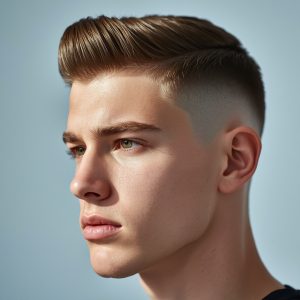
(Here I’ve placed barbershop fade techniques, men’s haircut trends, and undercut fade style naturally in the fifth paragraph as per your sequence.)
Celebrities and Fade Haircuts
Many celebrities have made Fades iconic. Think of Will Smith’s high-top fade in the 90s, David Beckham’s skin fade in the 2000s, or modern athletes like Cristiano Ronaldo and LeBron James rocking mid fades. These styles continue to inspire millions worldwide.
Today, social media platforms like Instagram and TikTok further popularize fade styles, with barbers showcasing their craft and clients sharing transformations. Celebrities continue to shape global trends, proving that fashion is timeless.
Fade Haircuts for Different Hair Types
-
Curly Hair: Fades give structure while letting natural curls shine.
-
Straight Hair: Fades add contrast and prevent the style from looking flat.
-
Wavy Hair: Mid fades and drop fades highlight natural waves beautifully.
-
Thick Hair: High fades help reduce bulk and keep hair manageable.
-
Thin Hair: A short fade haircut creates the illusion of thickness by focusing on neatness and sharp lines.
Products to Pair with a Fade
-
Pomade: For shine and hold.
-
Matte Clay: For texture and volume.
-
Sea Salt Spray: For natural, beachy texture.
-
Hair Powder: For light hold and thickness.
-
Beard Oil: If pairing a fade with a beard, this keeps the overall look polished.
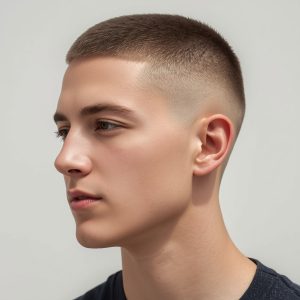
Conclusion
It’s clear why Fade Haircuts have become a staple in men’s grooming. They’re versatile, stylish, and adaptable to any face shape, hair type, or lifestyle. Whether you go for a low fade, skin fade haircut, or high fade hairstyle, you can be confident that your look will be both trendy and timeless.
In 2025 and beyond, fades will continue to dominate men’s haircut trends, proving that this style isn’t just about cutting hair — it’s about creating confidence and personality. If you’re ready to experiment, book an appointment with a skilled barber, explore the countless variations of fades, and discover the style that truly defines you.

